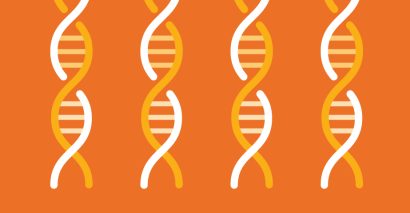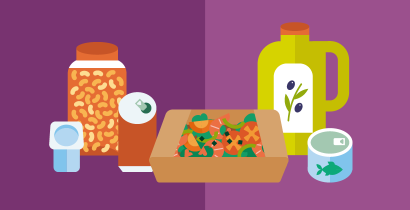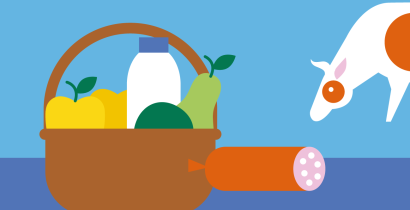Modern biotechnology in food: What is food biotechnology?
Last Updated : 06 August 2006By the end of the 21st century, biotechnology is likely to touch the lives of most Europeans through its application in areas such as food production, medicine and environmental protection.
In its broadest definition, biotechnology is any technique which uses living organisms to make products, to improve plants or animals, or to develop microbes for specific uses. This definition covers the traditional techniques of plant breeding, animal husbandry and fermentation, which can trace their roots back thousands of years. It also covers the methods of modern biotechnology such as the industrial use of recombinant DNA (deoxyribonucleic acid), cell fusion and novel bioprocessing techniques.
The oldest of these new techniques, gene cloning, is only just over 20 years old. The advanced science of modern biotechnology is based on a range of molecular genetics advances in 1950-75. These included the discovery of the structure of DNA by James Watson and Francis Crick in the 1950s, and the finding that DNA is the substance which carries genetic information by D T Avery in the 1940s.
An important part of modern biotechnology is the understanding, transferring and altering of genes, the units which allow all characteristics to be inherited, whether the maximum yield of an ear of wheat, the colour of a tomato or the enzymes produced by a strain of yeast. In the vast majority of living things, genes are made of DNA, which contains instructions to produce proteins.
Central to biotechnology is the fact that DNA's familiar "double helix" of sugar and phosphate molecules has an identical structure in all living things. This means that the information it contains can be transferred between different species of animals, plants or bacteria. For example, the gene for a bacterial protein which kills insect pests has successfully been introduced into a range of crops, reducing the need for chemical insecticides.
In addition to transferring genes between species, it is also possible to "switch off" undesirable traits such as the production of a particular protein. This technique - antisense technology - has been used to switch off the gene for softening in the tomato, giving a product with improved keeping qualities.
The impact of biotechnology on agriculture
After a slower start than in the medical sector, biotechnology is set to have a major impact on agriculture. In theory, it is now possible to carry out genetic manipulation and transformation on all plant species, including all the world's major crops.
To date, much commercial activity has focused on micropropagation and tissue culture techniques, which allow millions of identical plants to be produced which are free of diseases. These are particularly important for crops like flowers, ornamentals, potatoes and forest trees. Combined with genetic transformation systems, there is the potential to avoid the need for very long plant breeding programmes which can traditionally take more than 10 years.
Key topics in plant biotechnology
| Topic | Areas of research |
| Genetics and breeding | Genome research Genetic markers in breeding |
| Altering inputs and yields | Herbicide resistance in food & non- food crops Insect resistance in food & non- food crops; Resistance to bacterial, fungal & viral diseases |
| Products and applications | Sugar Sugar Starch (different composition or higher content) Oils (different composition or higher content) Flavours and fragrances (in food or as extracts) Speciality organic compounds (colours) Storage proteins Fruit (ripening and quality) |
| Environment | Drought, salt and heat tolerance Flood tolerance Cold adaptation (extending growing limits) Frost resistance (specifically against freezing) |



